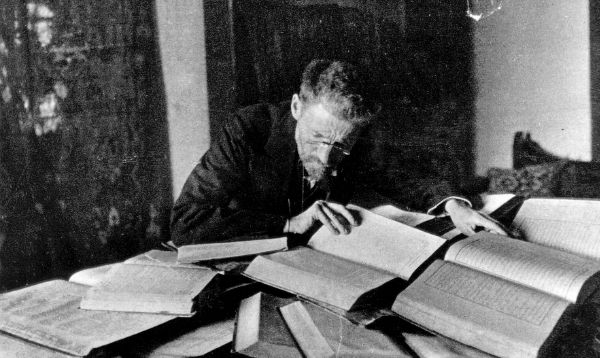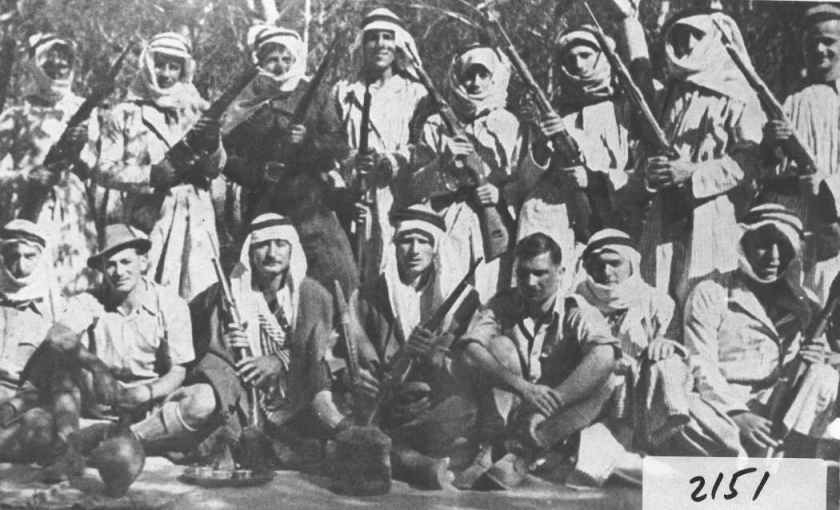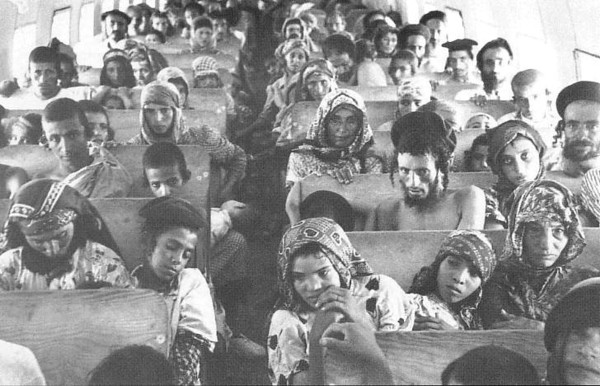Rasmī or aslī?: Arabic’s impact on Israeli Hebrew

This is a work in progress. Any suggestions, corrections, and criticisms are most appreciated. Do you have contributions to the appendix of Arabic slang in Hebrew? Click here.
Table of contents
1. From Ben-Yehūdāh to the PaLMaḤ

… the majority of the roots found in the Arabic vocabulary were once part of the Hebrew lexicon, and all of these roots are not foreign, nor are Arabic, but are ours, which we lost and have now found again [author’s emphasis].2
Ben-Yehūdāh based his argument on the contention that Arabic has preserved the character of proto-Semitic—a controversial position that most linguists reject.3 Later scholars have criticised Ben-Yehūdāh for carrying his opinion forward too far and making mistakes. One example concerns the Hebrew word for ‘locomotive’ (qaṭṭār), which he borrowed from the Arabic qiṭār under the incorrect assumption that it derived from the ‘common’ root qṭṛ, which, in Hebrew, means ‘to smoke or to burn incense’. However, the Arabic word qiṭār stems, in fact, from the Arabic qaṭar (‘to draw or tow’) and is not related to the Hebrew qīṭōr (‘steam’). Nonetheless, this misunderstanding led to the coining of qaṭṭār as the MH word for ‘locomotive’.4
One cannot attribute the influence of Arabic upon MH to Ben-Yehūdāh’s determination alone. Chomsky posited two further reasons: until 1948, Arabic was spoken by the majority of the Palestinian population (both Jewish and Arab); in addition, Arabic is closest to Hebrew amongst the contemporary Semitic languages.5 Hebrew, during the process of its revival, needed new words and patterns urgently and its neighbouring tongue, a rich and vibrant language, provided a ready mine of resources.6 With the largest lexicon of Semitic languages, Arabic provided a valuable resource for early Hebrew linguists.7 Furthermore, the phonetic similarity between Arabic and Hebrew may also have contributed to the ease of vocabulary transfer from one language to the other.8 According to Wexler, the early method of using of Arabic as a ‘guide’ for rebuilding Hebrew based itself upon three arguments: (1) that Arabic had the largest vocabulary; (2) that every native Arabic word represented a potential Hebrew one; and (3) that Levantine Arabic preserved an important substratum of hebraisims which could be repatriated
.9 Wexler dismissed the latter two contentions and noted that only the first—regarding the size of Arabic’s lexicon—is a factual statement.10

2. Arabic within a European context

Curiously, scholars have drawn attention to the fact that a number of words that appear to derive from Arabic or the influence of Arabic-speaking Jewry were actually adopted from European words whose origins are Arabic.18 One example concerns the MH word maḥsān (‘store-house’), which did not stem from the tempting Hebrew root ḥsn (‘provision’), but rather, from the SAE magazin. However, magazin itself evolved from the Arabic makhzan (pl., makhāzīn), which also means ‘store-house’.19 The Hebrew word sifrāh exemplifies the same point. Coming to Hebrew from the French chiffre, Yiddish stiffer, Russian tsifra, or English cipher, the origin of the SAE word is also Arabic: ṣifr (‘zero’).20 Again, although it is tempting to create a link between sifrāh and the Hebrew root sfr (‘to count, to read, to tell’), there is no etymological connexion between the word and the root from which it seems to derive.21 Another example of this concerns the Hebrew word taʿarīf (‘tariff’). Other times, words that appear to be borrowings from Arabic into Hebrew actually represent the influence of SAE upon both languages. The word for ‘film’ in Hebrew comes from the word sereṭ (‘ribbon’), much as the Arabic word sharīṭ (‘string’) came to mean ‘motion picture’; both cases reflect the influence of French (bande de film).22
Such examples raise the issue of the type of influence that Arabic has had upon Hebrew, which was not limited to that of a lexical nature. Even though sharīṭ and sereṭ appear to have a similar root, it was the specific use of sharīṭ to mean ‘film’, based on the French example, which inspired Hebrew linguists. Thus, Hebrew borrowings from Arabic took place not only in the realm of lexis, but in the dimensions of syntax and morphology, as well.23 A similar process took place in earlier centuries, as Arabic grammatical ideas—such as the concept of the root (Heb. shōresh) and the conjugation paʿal—made their way into Mediæval Hebrew.24 More recently, in the 1920s, new noun formations with the Arabic derivational suffix -iyyā(h) began to appear frequently in Hebrew.25 The -iyyā(h) suffix recalls the Mediæval Hebrew adoption of -iyyōt from the Arabic -iyyāt. Arabic semantic influences on Hebrew can be found as well: the use of the Hebrew word hévīʾāh (‘to bring’) to connote ‘giving birth’ is a direct result of the Arabic use of jāʾab which has the dual meaning of ‘bringing’ and ‘birthing’.26 Additionally, the Hebrew slang term ḥatīkhāh (lit., ‘a piece’), which refers to a beautiful girl, developed from the LA shaʿfah (< shaqfah), which again has the double meaning of ‘a piece’ and ‘a shapely girl’.27
References and citations
- Shehadeh, ‘Influence’, 61-62; Kutscher, History, 209. [↑]
- Ben-Yehūdāh, ‘Meqōrōt’, 9. See Blau, Renaissance, 32. I am currently working on a translation of this lecture by Ben-Yehūdāh, which reflects clearly his philosophy regarding the utility of Arabic in reviving Hebrew. [↑]
- Ibid. [↑]
- Blau, Renaissance, 33-34. [↑]
- Chomsky, ha-Lāshōn, 217. [↑]
- Shehadeh, ‘Influence’, 62. [↑]
- Ibid.; Wexler, Schizoid nature, 28. [↑]
- Almog, Sabra, 199. [↑]
- Wexler, Schizoid nature, 28. [↑]
- Ibid. [↑]
- Kutscher, History, 209-210. [↑]
- Ibid., 210. [↑]
- Blau, Renaissance, 31. [↑]
- Shehadeh, ‘Influence’, 62. [↑]
- Ibid. [↑]
- Ibid., 63; Blau, Renaissance, 31. [↑]
- Blau, Renaissance, 33. [↑]
- Kutscher, History, 210; Blau, Renaissance, 36-37. [↑]
- Blau, Renaissance, 36-37. [↑]
- Ibid., 37. [↑]
- Ibid. [↑]
- Ibid., 34-35. [↑]
- Shehadeh, ‘Influence’, 58. [↑]
- Ibid., 59. [↑]
- Kutscher, History, 211; Blau, Renaissance, 35-36. [↑]
- Shehadeh, ‘Influence’, 59. [↑]
- Ibid. [↑]
Bibliography and further reading
Note: A large amount of literature exists on the subject of the Hebrew language, modern Israeli slang, and the interaction of Hebrew and Arabic. The bibliography below contains not only a list of works consulted in the preparation of this article, but also sources for further research on the topic.
Works consulted
Aḥīʾasaf, ʿŌdéd, et al. Leqsīqōn ha-sleng ha-ʿIvrī we-ha-ṣevāʾī [Lexicon of Hebrew and military slang]. Ramat-Gan: Prōlōg, 1993.
Almog, Oz. The Sabra: The Creation of the new Jew. S Mark Taper Foundation imprint in Jewish studies. Translated from Hebrew by Haim Watzman. Berkeley/Los Angeles/London: University of California Press, 2000.
Bar-Adon, Aaron. ‘Language planning and processes of nativization in the newly revived Hebrew’. In ha-ʿIvrīt bat-zmannénū: Meḥqārīm we-ʿiyyūnīm [Studies on contemporary Hebrew], ed. Shelomo Morag, 198–213. Vol. 1. Jerusalem: Academōn Press, 1987.
Ben-Amotz, Dahn and Netiva Ben-Yehuda. Millōn ʿolāmī le-ʿIvrīt medubberet [World dictionary of Hebrew slang]. Tel-Aviv: A Lewīn-Epshṭayn, 1972–1982.
Ben-Yehūdāh, Elīʿezer. ‘Meqōrōt: Le-malléʾ he-ḥāsér bi-leshōnénū [Sources to fill the lacunæ in our language]’. Zikhrōnōt Waʿad ha-Lāshōn 4 (1914/5674): 3–14. [online] [online (text)]
Blanc, Haim. ‘Hebrew in Israel: Trends and problems’. In ha-ʿIvrīt bat-zmannénū: Meḥqārīm we-ʿiyyūnīm [Studies on contemporary Hebrew], ed. Shelomo Morag, 155–167. Vol. 1. Jerusalem: Academōn Press, 1987.
Blanc, Haim. Lāshōn bnéy-ādām [Human language]. Jerusalem: Bialik Institute, 1989.
Blau, Joshua. The Renaissance of Modern Hebrew and Modern Standard Arabic: Parallels and differences in the revival of two Semitic languages. Near Eastern Studies, 18. Berkeley: University of California Press, 1981. [online]
Chomsky, William Zev. Ha-Lāshōn ha-ʿIvrīt be-darkhéy hitpatḥūtāh [Hebrew, the eternal language]. Sifriyyat Dānī le-maddāʿ we-haśkél, 76. Jerusalem: Rubin-Mass, 1967.
Chomsky, William Zev. Hebrew: The Eternal language. Philadelphia: Jewish Publication Society of America, 1969.
Kornblueth, Ilana and Sarah Aynor. ‘A Study of the longevity of Hebrew slang’. International Journal of the Sociology of Language 1 (1974): 15–38 (DOI 10.1515/ijsl.1974.1.15).
Kutscher, Eduard Yechezkel. A History of the Hebrew language, ed. Raphael Kutscher. Jerusalem: Magnes Press of the Hebrew University, 1982.
Morag, Shelomo, ed. Ha-ʿIvrīt bat-zmannénū: Meḥqārīm we-ʿiyyūnīm [Studies on contemporary Hebrew]. 2 vols. Jerusalem: Academōn Press, 1987.
Piamenta, Moshe. ‘Hashpāʿat ha-ʿArāvit ʿal ḥīddūshéy Ben-Yehūdāh [The Influence of Arabic on the innovations of Ben-Yehūdāh]’. Leshōnénū lā-ʿām 12.6 (118) (Nīsān–Īyyār 1961/5721): 150–158.
Rozental, Rubik. Millōn ha-sleng ha-meqīf [Dictionary of Israeli slang]. Jerusalem: Keter, 2005.
Sáenz-Badillos, Angel. A History of the Hebrew language. Translated from Spanish by John Elwolde. 1st paperback ed. New York City: Cambridge University Press, 1996.
Sappan, Raphael. ‘Hebrew slang and foreign loan words’. Ariel 25 (Winter 1969): 75–80. [online (text)]
Sappan, Raphael. Mīllōn ha-sleng ha-Yiśreʾélī [The Dictionary of Israeli slang]. Jerusalem: Qiryat-Sefer, 1965.
Shehadeh, Haseeb. ‘The Influence of Arabic on Modern Hebrew’. In Études sémitiques et samaritaines offertes à Jean Margain, ed. Christian-Bernard Amphoux, Albert Frey, and Ursula Schattner-Rieser, 149–161. Lausanne: Éditions du Zèbre, 1998.
Shehadeh, Haseeb. ‘The Influence of Arabic on Modern Hebrew’. Langues et linguistique 5 (2000): 55–66.
Wexler, Paul. The Schizoid nature of Modern Hebrew: A Slavic language search of a Semitic past. Wiesbaden: Otto Harrassowitz, 1990.
Further reading
Amara, Muhammad Hasan and Bernard Spolsky. ‘The Diffusion and integration of Hebrew and English lexical items in the spoken Arabic of an Israeli village’. Anthropological Linguistics 28.1 (Spring 1986): 43–54.
Avinery, Isaac. Kibbūshéy ha-ʿIvrīt be-dōrénū [The Achievements of modern Hebrew]. Merḥavyāh: Sifriyyat Pōʿalīm, Hotsāʾat ha-Qībbūts ha-Artsī ha-Shōmer ha-Tsāʿīr, 1946.
Bar-Adon, Aaron. ‘The Evolution of Modern Hebrew’. In Acculturation and integration: A Symposium by American, Israeli and African experts, ed. Judd L Teller, 65–95. New York City: American Histadrut Cultural Exchange Institute, 1965.
Ben-Yehūdāh, Elīʿezer. ‘Sheʾelāh lōheṭāh (nikhbedāh) [A burning (weighty) question]’. In ha-ʿIvrīt bat-zmannénū: Meḥqārīm we-ʿiyyūnīm [Studies on contemporary Hebrew], ed. Shelomo Morag, 3–15. Vol. 1. Jerusalem: Academon Press, 1987. [online (text)]
Berdichevsky, Norman. ‘The Mother of languages: The Influence of Hebrew on other languages’. Ariel 104 (1997): 6–13.
Blanc, Haim. ‘The Growth of Israeli Hebrew’. Middle Eastern Affairs 5.12 (December 1954): 385–392.
Blanc, Haim. ‘Israeli Hebrew texts’. In ha-ʿIvrīt bat-zmannénū: Meḥqārīm we-ʿiyyūnīm [Studies on contemporary Hebrew], ed. Shelomo Morag, 131–151. Vol. 1. Jerusalem: Academon Press, 1987.
Fellman, Jack, Reuven Sivan, Uzzi Ornan, et al. ‘Terūmātō shel Elīʿezer Ben-Yehūdāh li-teḥiyyat ha-lāshōn ha-ʿIvrīt [Elīʿezer Ben-Yehūdāh’s contribution to the revival of the Hebrew language]’. Qātedrāh 2 (November 1976): 81–107. [online]
Fisherman, Haya. ‘Attitudes toward foreign words in contemporary Hebrew’. International Journal of the Sociology of Language 86 (1990): 5–40 (DOI 10.1515/ijsl.1990.86.5).
Kamrat, Mordechai, Uzzi Ornan, Haim Blanc, et al. ‘ʿAl lāshōn ha-“tsabbārīm”: Wikūʾaḥ mi-sāvīv la-shulḥān ʿāgōl [On the language of the “tsabbarim” (A Round-table discussion)]’. Leshōnénū lā-ʿām 6.2–3 (1955): 3–17.
Koplewitz, Immanuel. ‘The Use and integration of Hebrew lexemes in Israeli spoken Arabic’. In Fourth international conference on minority languages, ed. Durk Gorter, 181–195. Multilingual matters, 71. Vol. 2, Western and Eastern European papers. Clevedon, UK/Bristol, Pennsylvania: Multilingual Matters, 1990.
Kutscher, Eduard Yechezkel. ‘Modern Hebrew and “Israeli” Hebrew’. Conservative Judaism 10.3 (Spring 1956): 28–45.
Morag, Shelomo. ‘Planned and unplanned development in modern Hebrew’. Lingua 8 (1959): 247–263 (DOI 10.1016/0024-3841(59)90025-7).
Shir, Semadar. Béyt-séfer zeh aḥlāh sṭūṣ [School is cool]. Tel-Avīv: Sifriyyat Maʿarīv, 1993.
Transliteration tables
For Arabic, I have chosen to conform to the basics of the system used in the International Journal of Middle East Studies, the new Encyclopædia of Islam (3rd ed.), and the Library of Congress, with two major exceptions: I always mark the tāʾ marbūṭah (ة) with an ‘h’ and I assimilate the definite article (al-) into the sun letters, both stemming from an effort to make the transliterations approximate both orthography and pronunciation.

For Hebrew transliteration, I have adopted a similar method that makes it easier to compare the two languages.

Related links
Image credits
- Artistic rendering of the Hebrew and Arabic words for ‘peace’, shālōm and salām, respectively, in a style demonstrating their graphic resemblance, against the backdrop of the Old City of Yāfō (Jaffa). Source: D Gershon Lewental (DGLnotes).
- Ben-Yehūdāh working at his desk in Jerusalem, c. 1912. Source: Shlomo Narinsky (David B Keidan Collection of Digital Images, Central Zionist Archives).
- Members of PaLMaḤ‘s ‘Arab department’, known as mistaʿaravīm, from Qibbuts Yagur, near Ḥaifa. Source: Qibbūts Yāgūr.
- Yemenite immigrants being brought to Israel during the rescue mission of Operation ‘Magic Carpet’, 1949–1950. Source: Wikipedia.
